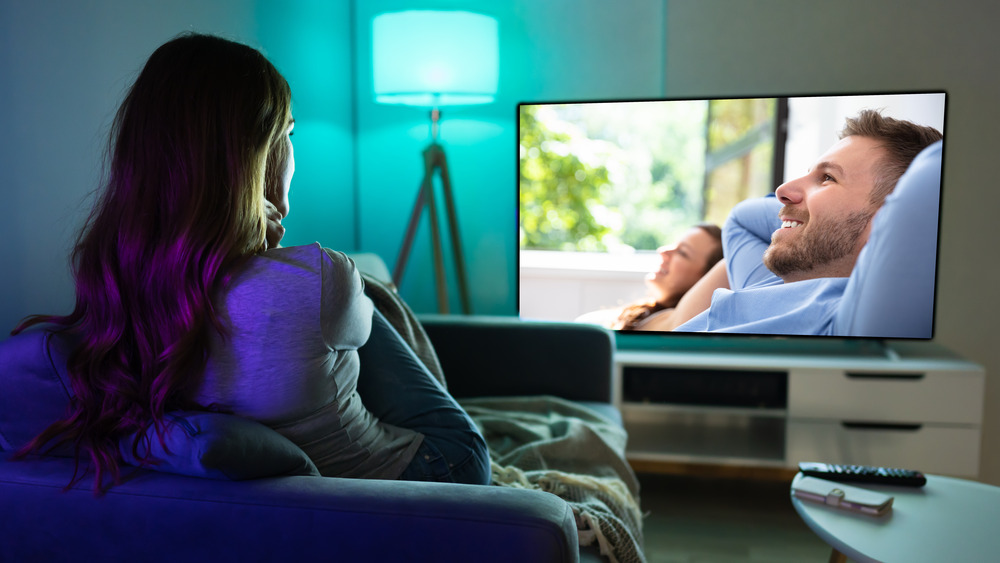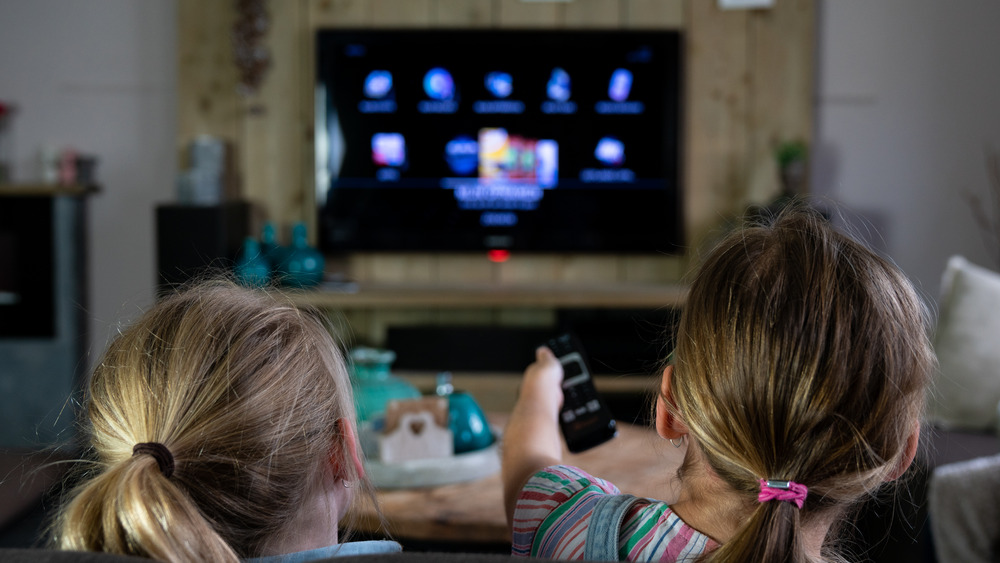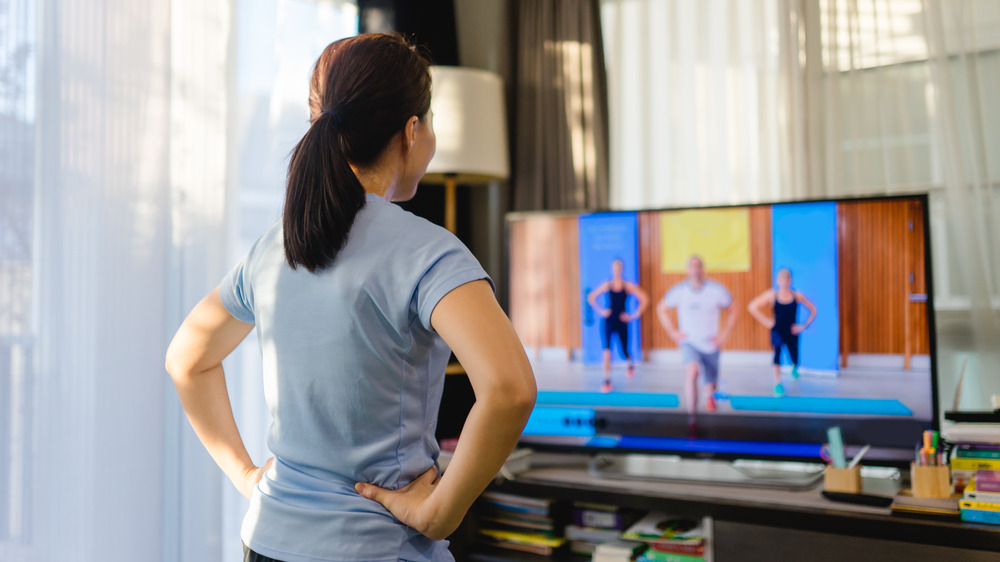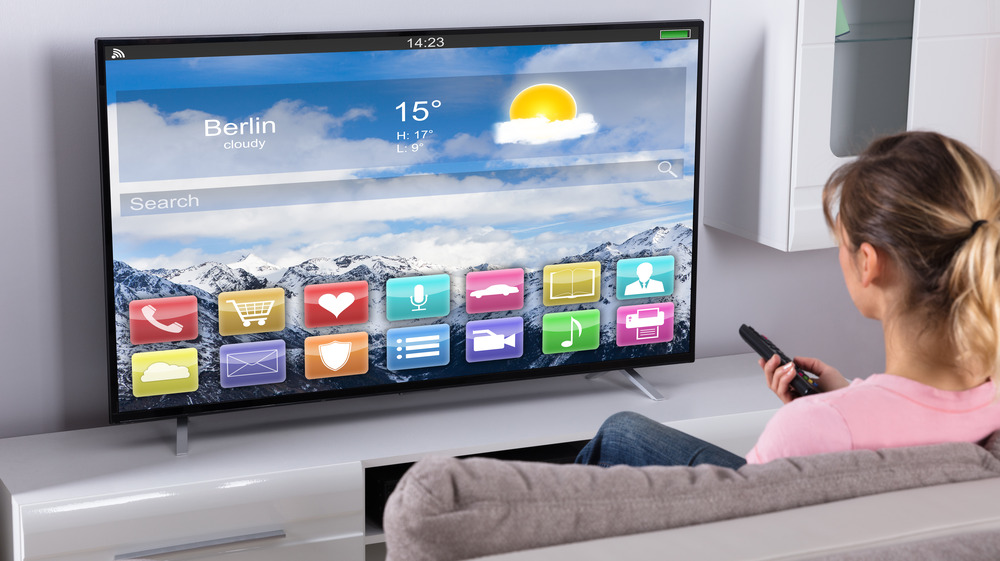Will Sitting Too Close To The TV Really Hurt Your Eyes?
Televisions have been around since the late 1920s. At 21 years old, Philo Taylor Farnsworth invented the telecommunication medium in 1927. Back then, televisions produced black-and-white moving pictures, and color TVs only came to materialize in the 1950s (via BeBusinessed). Since TVs went out into the world, almost every household in America owns the electronic device — watching the best reality TV shows and current events. Today, smart TVs have apps like Disney+, Amazon Prime, and Netflix, where anyone can watch their favorite drama series.
Kids are fond of watching cartoons and tend to watch for hours — if not supervised. Sometimes, they move too close to the TV as they are so engrossed with their shows — and this behavior often worries moms that the proximity of their children's eyes to the television screens would pose significant risks. However, experts deem this assumption as false. "It's not an old wives' tale; it's an old technology tale," Dr. Norman Saffra, an ophthalmologist at Maimonides Medical Center in Brooklyn, told The New York Times. "Based on the world our grandmothers lived and grew up in, it was an appropriate recommendation."
Health experts claim that watching TV before bed can pose greater health risks than watching close to the TV screen. Although, people sometimes wonder why their eyes hurt when watching too much TV.
Modern TVs emit less radiation that is not harmful to the eyes
In 1967, news of radiation leaks in TVs emerged, and it affected almost all models. However, there were already concerns about radiation with black-and-white TVs more than 20 years prior. Experts made tests on several models of a specific TV brand, and their findings showed that the sets emitted "X-radiation in excess of desirable levels" (via The Atlantic). The concerns led to the creation of the radiation-regulation bill (1968 Radiation Control for Health and Safety Act), including more testing done by the National Center for Radiological Health (NCRH) and the Public Health Service. The recalled TVs were said only to have little radiation that didn't pose a significant health risk, but only to people who had excessive screen times.
Since then, TVs, computers, and mobile devices have greatly improved, and their screens pose no serious health problems. However, it is still best to have a specific amount of screen time that is reasonable. According to WebMD, watching close to the screen may cause headaches, but it won't cause severe eye problems. Nearsightedness can be the reason why people tend to move closer to the TV when watching to see the pictures clearly.
Watching TV for long periods can cause eye strain
Apart from headaches, watching TV for an excessive amount of time can also cause eye strain. But there are more factors that cause the eye condition. Eye strain is also known as asthenopia, and it happens when a person blinks less when watching TV or working on the computer for long periods. Blinking is essential to eye health as it lubricates and refreshes the eyes, but if done less — dry, tired eyes may occur (via Verywell Health).
Constant focus on an object on the screen can cause eyes to strain, as when watching TV in the dark. The lack of light inside a room can make the eyes' irises open wider to let more light in. When focusing on the screen, the irises fail to contract as much as they should. Sometimes, the eye condition causes headaches, and it's no fun (via Healthline). Experts recommend looking at another part of the room at times to shift the eyes' focus, preventing eye strain. Looking at objects near and at a distance can also help.
What is the ideal TV viewing distance?
For several people, watching TV is part of their daily routine. To some, screen times are even a form of relaxation after a long busy day at work or school. It is normal to get lost in watching your favorite shows and movies on TV, but it is optimal to have regulations that can help prevent eye fatigue.
Eye care experts recommend having your sitting area approximately eight to ten feet away from the electronic device. The wider the screen, the greater the proximity. Just because the screen is already wide and viewing it at a considerable distance is much better for your eye health. Then again, if you're comfortable at a specific distance and that you feel no discomfort, then the proximity is right (via Verywell Health). Viewing the screen from a high wall can also cause eye fatigue. Consider adjusting your TV to an eye-level to prevent the eye condition.
Taking breaks from watching TV can also help keep the eyes from getting tired. The American Optometric Association suggests taking a rest from watching television from time to time. They recommend a 20-second break from watching the TV for every 20 minutes. For live TV shows, the 20-20-20 rule may not happen as you can't press pause. You can, however, redirect your focus on near and far objects around the place for a few seconds to refresh your eyes.



